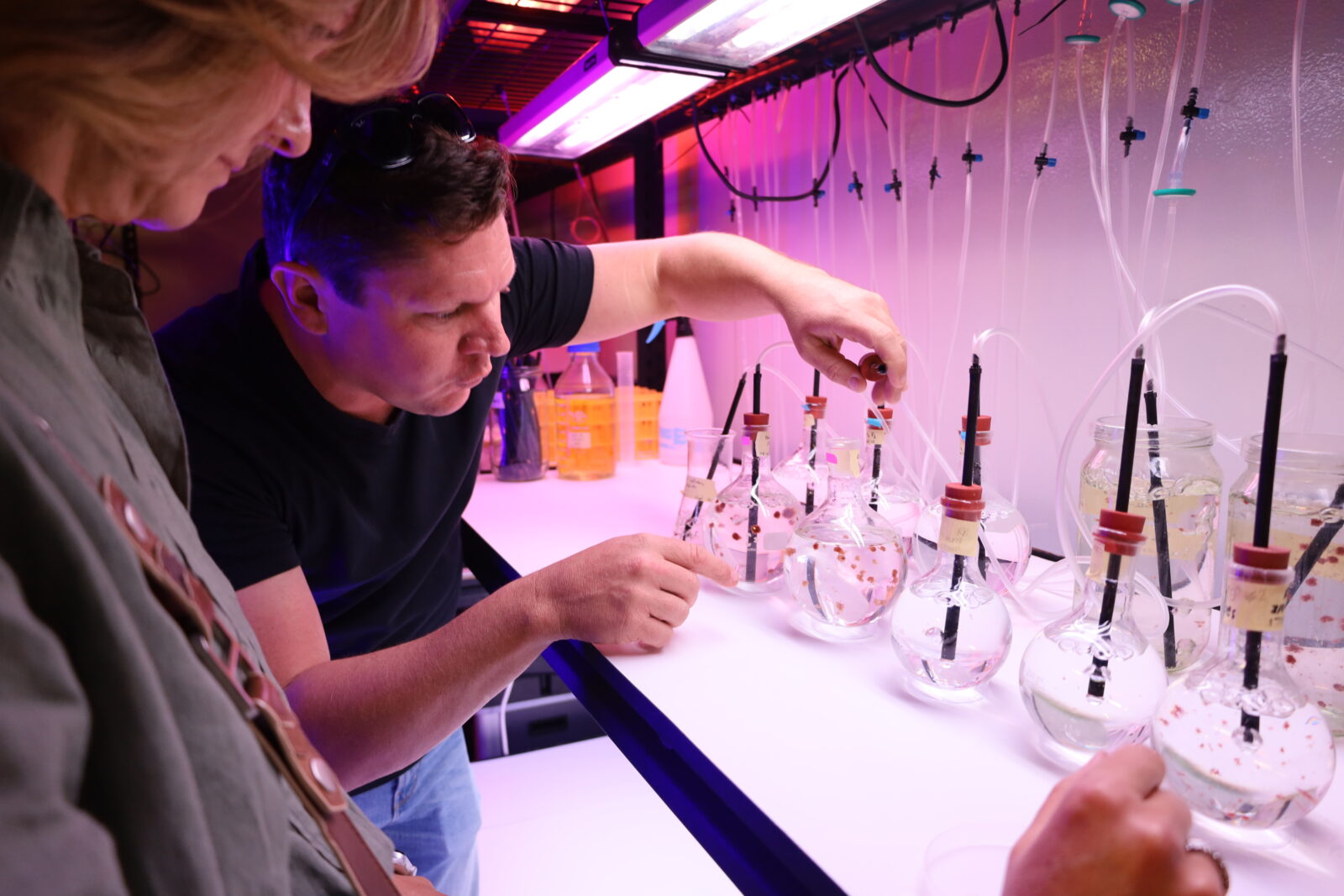AgriFutures Australia welcomes new Chairman
 SEAWEED AND ALGAE / Wednesday, 11 September 2024
SEAWEED AND ALGAE / Wednesday, 11 September 2024
Red seaweed could become Australia’s ‘wheat of the coastline’ with new cultivation manual

Opportunities for the commercial cultivation of a methane-mitigating seaweed species have been boosted through new research funded by AgriFutures Australia.
The red seaweed, Asparagosis taxiformis, has been proven to mitigate methane emissions in cattle by up to 98% when fed in small quantities, however technical challenges in producing the seaweed at scale have restricted its uptake by the livestock industry.
A recently published production manual will support this by providing information on cultivation for new industry players interested in establishing an Asparagopsis hatchery or nursery.
Led by Dr John Statton from the University of Western Australia’s Seaweed Aquaculture Research and Hatchery (SARaH) Lab at the Indian Ocean Marine Research Centre at Waterman’s Bay in Perth, the Asparagopsis taxiformis hatchery and cultivation manual details how to start cultures from carpospores and produce tetrasporophytes within onshore facilities.
“The manual covers topics including the field collection of reproductive thalli, cystocarp extraction, carpospore liberation and germination, tertasporophyte growth and cultivation,” Dr Statton said.
“With this manual, those new to seaweed cultivation can gain the necessary knowledge and techniques to start up a hatchery and nursery.”
Dr Statton said the manual is a starting point for those who want to have significant impact on the reduction of greenhouse gas emissions in the agriculture and livestock sectors and help the industry meet its goal of becoming carbon neutral.
AgriFutures Australia’s Senior Manager of Emerging Industries Dr Olivia Reynolds said the Asparagopsis taxiformis species had many advantages.
“It is endemic to both the cool temperate and tropical waters of Australia, and is common in estuaries and bays, which makes it suitable to grow in many coastal areas,” Dr Reynolds said.
Dr Reynolds said the manual fills a gap in publicly available knowledge in Asparagopsis cultivation and would encourage collaboration and knowledge sharing to facilitate industry-wide improvements. It includes the publication of two fact sheets: Optimising cultivation conditions for Asparagopsis taxiformis gametophytes and Organic nutrient media for cultivation of Asparagopsis taxiformis.
The project builds on AgriFutures Australia’s previous investments in the seaweed industry including
the Australian Seaweed Industry Blueprint and Implementation Plan.
The manual is available for download here
For more information on AgriFutures’ seaweed investments
Subscribe to the Emerging Industries mailing list here
Vision and photographs available for download here
Media enquiries:
Megan Hendry
Emerging Industries Extension Officer
AgriFutures Australia
07 4930 9344
Latest News
-
AgriFutures Australia welcomes new Chairman CORPORATE / 11.09.24
CORPORATE / 11.09.24 -
Protecting Australia's beekeeping future through smart traceability HONEY BEE & POLLINATION / 11.09.24
HONEY BEE & POLLINATION / 11.09.24 -
Meet your future agronomists: The five Horizon Scholars getting a career head start WORKFORCE AND LEADERSHIP / 11.09.24
WORKFORCE AND LEADERSHIP / 11.09.24 -
New data reveals $8 billion contribution of Australia’s chicken meat industry CHICKEN MEAT / 11.09.24
CHICKEN MEAT / 11.09.24






